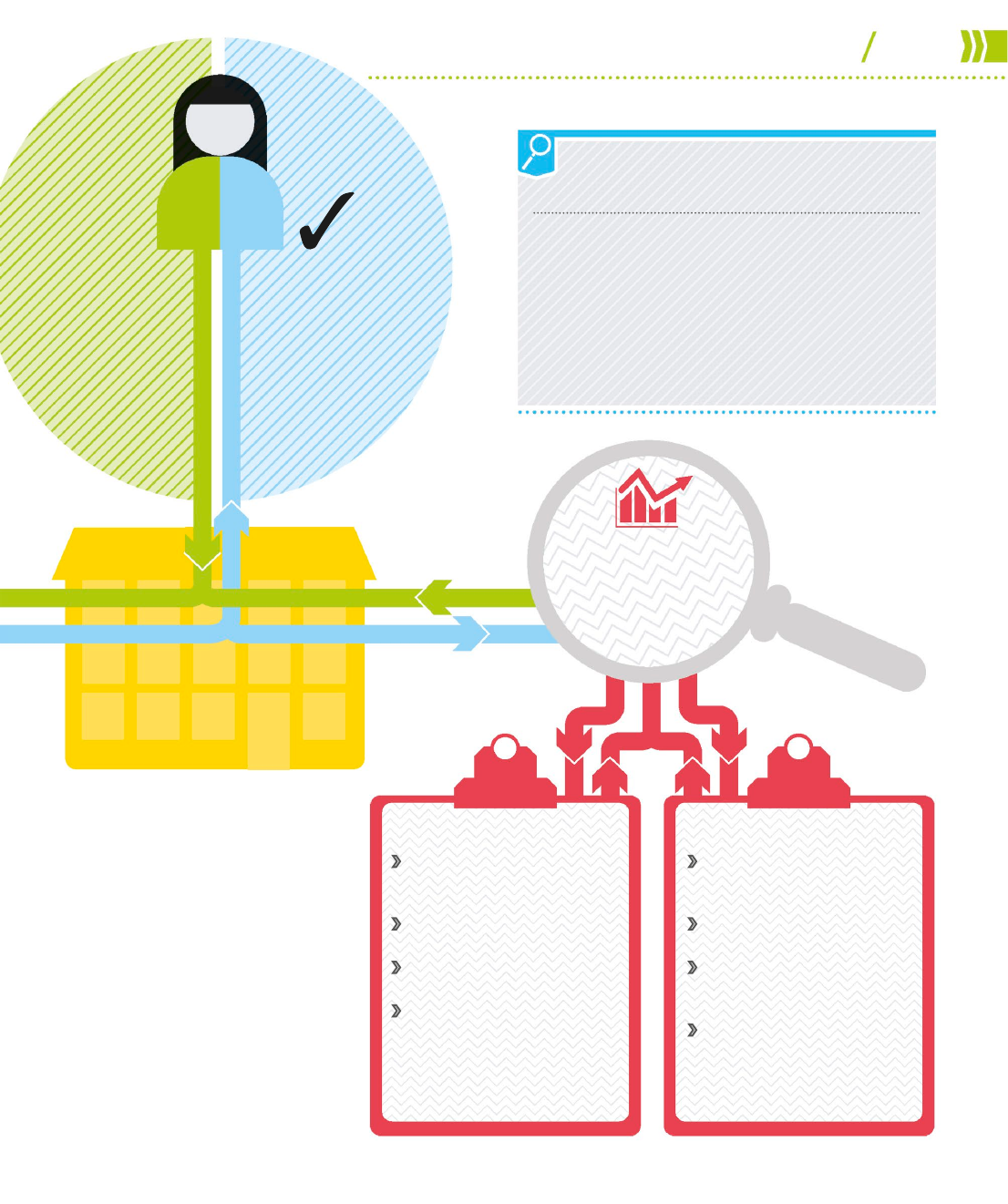
192 193
HOW SALES AND MARKETING WORKS
Marketing mix
?
CASE STUDY
Marketer
has a
question
Marketer
reaches a
decision
Agency
Carries out original
research and organizes
research data into
meaningful results
DATA RETURNED
DATA REQUESTED
Internal sources
Web usage data (for example
browser logs and online
sales records)
Customer profiles with buying
history and demographic data
Accounting records, such as
financial statements
Original data from past
market research reports
External sources
Industry reports by trade
bodies, institutions, and private
research companies
Reports by broadcast, print,
and internet media
Academic papers, university
think tank reports, and
research library holdings
Government surveys, reports,
and statistics
32%
the projected
increase in the
hiring of market
research analysts
in the US by 2022
Coca-Cola launch
In 1985, Coca-Cola launched a new kind of cola.
The launch followed two years of taste tests, costing
$4million, to refine the product. However, the drink
failed and had to be withdrawn in the face of
overwhelming disapproval from the public. In the
marketing postmortem, analysts concluded that the
company’s researchers had failed to ask customers
a very important question: “Do you want a new Coke?”
Secondary data
collection
Published material
on a subject
US_192-193_Market_Research.indd 193 09/11/2016 11:02

Defining market groups
To establish different consumer groups,
marketers create five segments and focus
on each individually. Besides identifying
groups by geography and demographics,
marketers also explore psychology to
ascertain how consumers behave, so that
they gain a better idea of which products
might appeal to which consumer groups.
See also pp.258–261.
How it works
Marketing departments use
a strategy of market segmentation
to find the potential customers who
are most likely to buy a particular
product, thereby increasing the
chances of a successful product
launch. They divide a broad group
of consumers into subgroups based
on many factors, including age,
lifestyle preferences, location,
family structure, household income,
and occupation. This process
narrows down a potentially huge
market into segments, allowing
marketers to identify the ones more
inclined to buy a given product.
For example, after applying this
strategy, a company trying to launch
premium-price organic baby food
realizes that instead of marketing to
all women who have young children,
it should aim its product at working
mothers with children under six
months, above-average incomes,
and an interest in healthy eating.
Behavioral
Focuses on behavioral
patterns when it comes to
shopping. Understanding
this helps marketers adapt
campaigns to target
specific groups. Potential
focus areas include:
Brand loyalty
Regularity of purchases
Credit card usage
Typical expenditure
On- or offline shopping
Heavy product user
Market segmentation
“Market segmentation
is a natural result of
the vast differences
among people.”
Donald Norman
In order to make decisions about who to sell their product to,
marketers try to identify distinct groups of consumers with similar
wants and habits who together form a “segment” of the market.
Baby Boomers Section of
population born between
1946 and 1964
Generation X People born
between 1966 and 1980
Millennials Section of
population born between
1980 and the early 2000s
NEED TO KNOW
US_194-195_Market_Segmenatation.indd 194 15/12/2014 12:58
194 195
Psychographic
Focuses on consumer’s interests, values,
and opinions to help marketers develop
relevant messages and find the right
media channels to target a segment.
Potential focus areas include:
Risk taker
Charitable
High achiever
A tendency towards
expensive tastes
A preference for
email contact
Geographic
Concentrates on a
customer’s place of
residence, so that any
product launched is
made relevant to their
environment. Potential
focus areas include:
Post code
Continent
City
Neighbourhood
Population density
Climate
Demographic
Uses basic consumer
data, such as gender or
age, to accurately categorize
needs and target products
appropriately. Potential
focus areas include:
Income
Nationality
Family size and age
Ethnic background
Occupation
Religion
Sociographic
Identifies individuals’ connections
on social media, or membership of
political and other groups, helping
marketers learn about consumers’
passions and interests. Potential
focus areas include:
Group memberships
Number of friends on social
media
US_194-195_Market_Segmenatation.indd 195 21/11/2014 16:25

194 195
Psychographic
Focuses on consumer’s interests, values,
and opinions to help marketers develop
relevant messages and find the right
media channels to target a segment.
Potential focus areas include:
Risk taker
Charitable
High achiever
A tendency towards
expensive tastes
A preference for
email contact
Geographic
Concentrates on a
customer’s place of
residence, so that any
product launched is
made relevant to their
environment. Potential
focus areas include:
Post code
Continent
City
Neighbourhood
Population density
Climate
Demographic
Uses basic consumer
data, such as gender or
age, to accurately categorize
needs and target products
appropriately. Potential
focus areas include:
Income
Nationality
Family size and age
Ethnic background
Occupation
Religion
Sociographic
Identifies individuals’ connections
on social media, or membership of
political and other groups, helping
marketers learn about consumers’
passions and interests. Potential
focus areas include:
Group memberships
Number of friends on social
media
US_194-195_Market_Segmenatation.indd 195 21/11/2014 16:25
..................Content has been hidden....................
You can't read the all page of ebook, please click here login for view all page.
